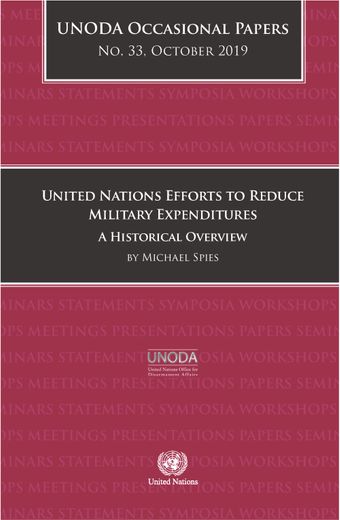- Home
- Books
- UNODA Occasional Papers No. 33
- Chapter
Conclusions and recommendations

- Author: United Nations
- Main Title: UNODA Occasional Papers No. 33 , pp 72-76
- Publication Date: August 2019
- DOI: https://doi.org/10.18356/7b8290fe-en
- Language: English
- Previous Chapter
- Table of Contents
- Next Chapter
The need to devote specific attention to the problems of excessive military expenditures did not disappear with the end of the cold war. Despite the end of the arms race, global military spending in constant figures currently exceeds the levels reached in the late 1980s, according to the Stockholm International Peace Research Institute.1 The ranks of the top spenders have expanded beyond the former cold war blocs and now includes advanced developing countries in Asia. In 2018, the top six spenders were, in descending order: United States, China, Saudi Arabia, India, France and the Russian Federation. Increases in military spending continue to be a source of international tension, especially among significant military Powers and in various regions where trust and security cooperation are already low. The lack of cooperation and dialogue on military spending also deprives States with a means of fulfilling the Charter’s objective of maintaining peace and security with the least diversion of economic resources.
-
From This Site
/content/books/9789210046459c010dcterms_title,dcterms_subject,pub_keyword-contentType:Journal -contentType:Contributor -contentType:Concept -contentType:Institution105


